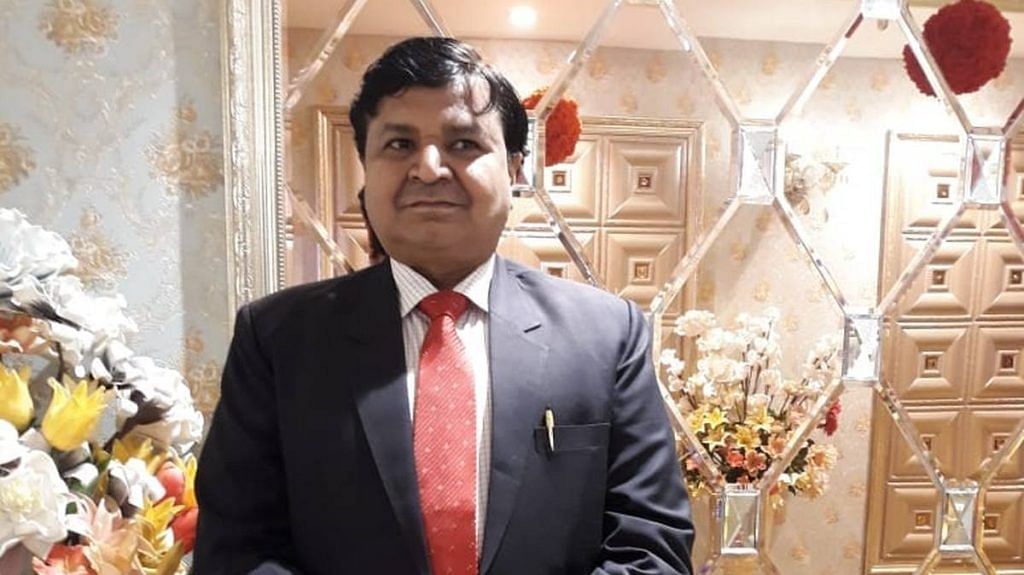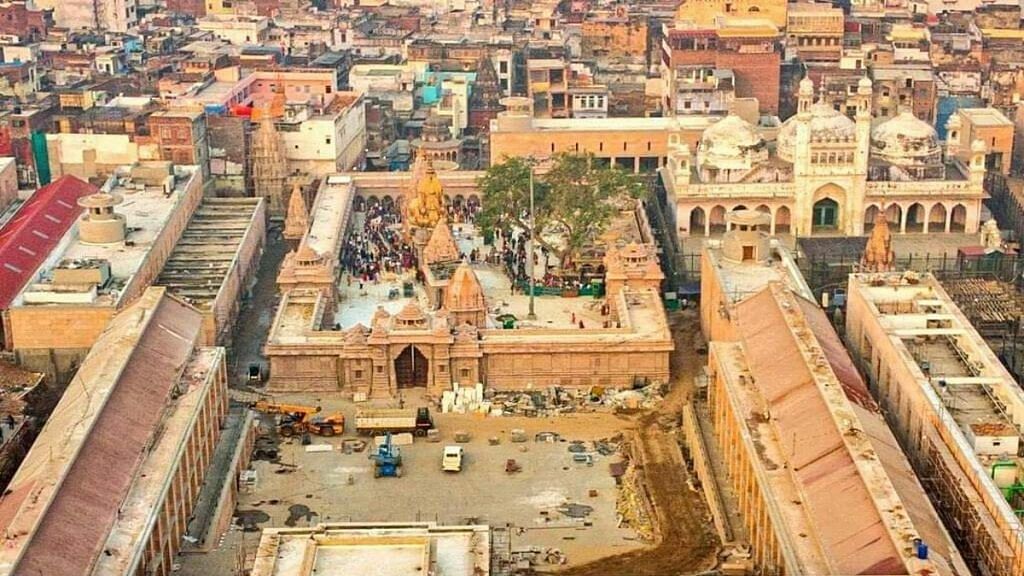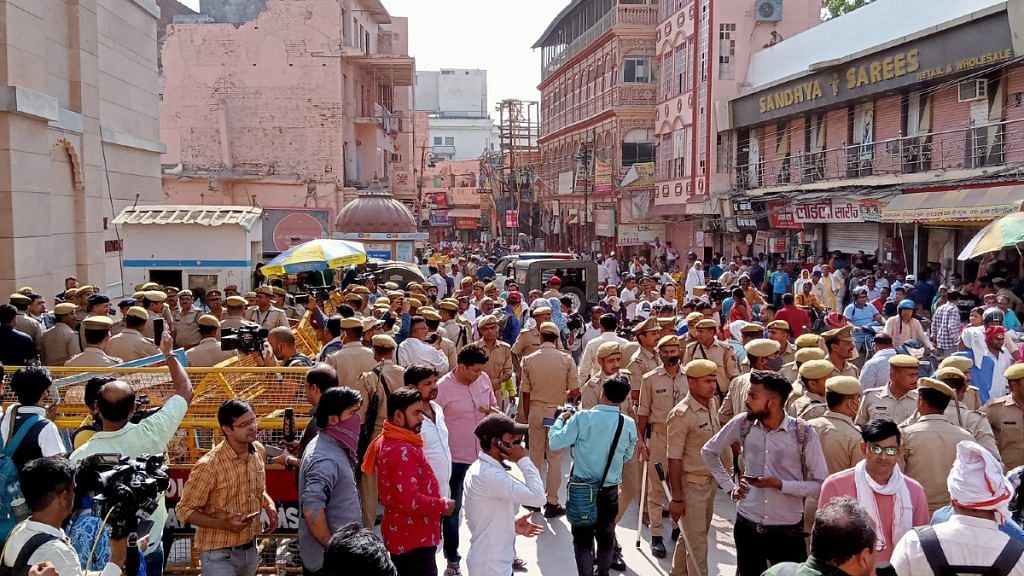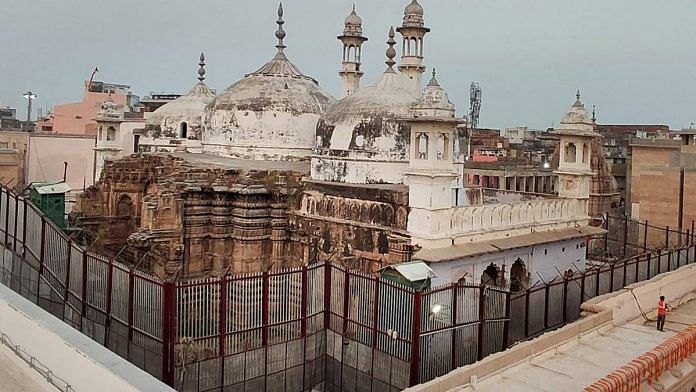Lucknow: At around 3 pm on Wednesday, Varanasi district judge Ajaya Krishna Vishvesha issued the last order of his career—directions to the district magistrate to make arrangements for pooja and raag-bhog of idols in the disputed southern tehekhana of the Gyanvapi mosque premises by a priest specified by the Kashi Vishwanath temple trust. Minutes later, he was given a farewell by the Banaras Bar Association and the Central Bar Association. But his parting shot has potentially shaped the politics of UP for months and years to come.
The 60-year-old Vishvesha was the district judge in the Varanasi court until 31 January. And the country’s most important political and religious dispute—the next Ayodhya—was transferred to his court in May 2022. The Supreme Court ordered that the Shringar Gauri case pertaining to a petition for Hindus to worship in the Gyanvapi basement area be transferred from the court of civil judge (senior division) to Vishvesha’s court because the social complexities of the case required a more “senior and experienced judicial officer.”
Vishvesha’s last order, issued just over a week after the Ram temple Pran Pratishtha presided over by Prime Minister Narendra Modi, set off a flurry of activity on the ground.
As soon as his directive came, everybody swung into action. Wasting no time, Varanasi district magistrate S. Rajalingam ordered a 7-by-7-foot gap to be created in the mosque’s double-layered barricading— erected in 1993 by the Mulayam Singh Yadav-led government— granting access to the southern cellar for priests. A priest designated by the Kashi Vishwanath temple trust quickly prepared the basement site, called ‘Vyas Ji Ka Tehkhana’, inside the Gyanvapi mosque and performed prayers at 3 am on Thursday.
This is why retired judge Ajaya Kumar Vishvesha is ThePrint’s Newsmaker of The Week.

With a law degree from Haryana’s Kurukshetra University, Vishvesha entered the Uttar Pradesh Higher Judicial Service as a munsif (civil judge, junior division) in 1990. Over the next two decades, he held various judicial positions in numerous districts across undivided UP.
In 2009, the UP government appointed him as a special secretary and additional legal remembrancer (LR). He served in this role, providing legal advice to the state government, until 2014. Subsequently, he returned to the judiciary as an additional district and sessions judge in Jhansi, where he remained until 2017. After serving in similar capacities in Hathras, Budaun, Sitapur, and Prayagraj, he took over as district and sessions judge in Varanasi in August 2021, assuming a central and often controversial role in the Gyanvapi mosque dispute.
Also Read: How drama unfolded as Varanasi cops stopped Shankaracharya from carrying out parikrama of Gyanvapi
Revival of Gyanvapi controversy
The Gyanvapi mosque has long been a battleground, both politically and legally. The first lawsuit post-independence was filed in 1991, centring on the property’s ownership. Back then, petitioners like Somnath Vyas ‘Vyasji’ argued that the land belonged to the deity Visheshwar and should be handed over to the Hindu community. They also contended that the Places of Worship (Special Provisions) Act didn’t apply as the mosque was built on remnants of the Adi Visheshwar temple.
Over the last few years, new cases have been filed on who could pray where and until when, along with the title ownership. The case at the centre of the renewed legal tussle is the Shringar Gauri case filed by five Hindu women in August 2021. They sought legal permission for year-round worship of the idols of Hindu deities located on the outer wall of the Gyanvapi premises. This, however, was only a portal for the larger push to change the status quo at the Gyanvapi mosque and reclaim what Hindus believed was their site to begin with.

In the wake of the petition, the senior division civil court ordered an archaeological survey, appointing an advocate as a court commissioner to inspect the premises. The court-appointed team conducted a videographic survey in May 2022.
However, controversy erupted when the Hindu side claimed that a structure found inside the mosque was a shivling. The Anjuman Intezamia Masjid committee, managing the mosque, insisted it was a fountain. This debate reached a fever pitch during a prime-time TV debate, with a BJP spokesperson making incendiary remarks, leading ultimately to the June 2022 beheading of an Udaipur tailor who’d posted on social media in favour of the leader.
Vishvesha’s role—from rejecting petition to allowing pooja
As the Varanasi district judge, Vishvesha went about in a systematic manner trying to consolidate the various Gyanvapi-related cases in court. But this came only later.
His first order in the dispute came in June 2022, when he rejected the petition filed by Jyotish Peeth Shankaracharya Swami Avimukteshwaranand seeking permission to worship the ‘shivling’ found in the mosque premises.
In October 2022, Vishvesha also dismissed an application filed by Hindu plaintiffs seeking a scientific investigation of the disputed structure.
Then, in May 2023, Vishvesha’s court gave a significant order consolidating seven suits related to the Adi Visheshwar temple pending in two different local courts in the city. Additionally, the Shringar Gauri case, already under consideration in his court, was designated as the leading case among the eight matters.
A few months later, in October 2023, he also transferred a ninth suit—filed in September in the court of the civil judge (senior division) by Hindu priest Shailendra Kumar Pathak— and consolidated it with the other eight cases.
The order in that case has now led to the resumption of prayers in the southern cellar of the Gyanvapi premises after 30 years. The cellar was closed by the state government in December 1993 following the violence witnessed across Uttar Pradesh after the Babri Masjid demolition.
Pathak is the grandson of Somnath Vyas ‘Vyasji’, who claimed descent from priests of the erstwhile Kashi Vishwanath temple and filed the initial Gyanvapi dispute petition in 1991.

Significantly, it was Judge Vishvesha’s court that ordered an Archaeological Survey of India (ASI) survey of the Gyanvapi mosque premises last June, excluding the wuzukhana housing the disputed structure
The ASI began its survey on 4 August 2023, and completed it after three months in November 2023. It finally submitted its report to the court on 18 December 2023, with the document noting that there was evidence that “a large Hindu temple” once stood on the Gyanvapi site.
On 24 January this year, Vishvesha’s court authorised providing hard copies of the report to both Hindu and Muslim parties. Two days later, the Hindu side made the report public. Vishvesha gave his last order a few days thereafter.
Also Read: Supreme Court turns down Gyanvapi committee’s plea against prayers by Hindus in mosque’s basement
‘Gyanvapi case moving on lines of Ayodhya’
Vishvesha’s 31 January order has drawn outrage from the Muslim side, with comparisons being drawn to Ayodhya.
Speaking to ThePrint, the lawyers representing the Anjuman Intezamia Masjid committee described it as a “travesty of justice”.
“The judge passed the order on 31 January and the administration complied with it in the middle of the night. They opened a window for devotees to see the cellar. We have mentioned the matter before the Supreme Court, which asked us to go to the high court. The latter’s registry has said we will be informed about the status. We are waiting now,” Zaheer Asghar, a member of the legal team of the Muslim side said Thursday.
On Friday, however, the Allahabad High Court asked the mosque panel to amend its pleas to include a challenge to a 17 January order, which effectively means the prayers will continue as of now. The 17 January order of Vishvesha’s court had led to the appointment of the Varanasi DM as the receiver of the southern cellar.
Varanasi-based advocate Merajuddin Siddiqui, part of the Muslim side’s legal team, alleged that the Muslim side was not given fair consideration.
“When the petition was filed by Shailendra Pathak, we had given an application under order VII rule 11 of the CrPC (which provides for the rejection of a plaint), stating that it was not maintainable,” Siddiqui said. “However, rather than hearing our application, which has been pending for months now, the judge has gone ahead and given an order that pooja be started. In this case, a decision has been made even as the maintainability of the application is yet to be decided.”
The Kashi Vishwanath-Gyanvapi case mirrors events in the Ayodhya dispute, Siddiqui added, alleging that the law was being “torn to shreds”.
“The case is moving along the same lines as that of the Ayodhya dispute. Just as the locks of the Babri masjid were allowed to be opened in 1986, this order (allowing pooja in the cellar) has come,” he said.
The Muslim side should be allowed to prove that the structure inside the wuzukhana is a “fountain”, according to Siddiqui. “The order was possibly signed around 3 pm and we got to know about it from mediapersons around 4 pm.”
Senior advocate Atiq Khan, who practices in the Sitapur district court where Vishvesha served as district and sessions judge from July 2019 to January 2020, described him in positive terms but suggested the order might have been issued “on the basis of faith”, likening it to the Supreme Court’s judgment in the Ayodhya case.
“Vishvesha stayed here only for a few months. He was a good judge,” Khan said. “But as far as this order is concerned, it seems that it has come on the same lines as that of the Supreme Court judgment in the Babri masjid case.”
(Edited by Asavari Singh)




Dear Shikha,
I appreciate your detailed discussion on Muslims, but I noticed a lack of mention regarding how Hindus have faced challenges in practicing their faith, and the rationale behind these obstacles. While I understand that achieving complete impartiality in theprint is challenging.
It’s worth noting that a new Mahadev temple is set to be constructed soon, replacing a mosque, following a court order. This decision, based on legal proceedings, will reflects the complexities of the situation. I urge you to delve into the historical context to better understand the ground reality and provide a more comprehensive perspective in your discussions.
May Mahadev’s blessings be with you.
The story reflects the Muslim point of view only and is heavily tilted to suit their ends. Unfortunately, there is no mention of what the Hindu side says. With such a biased story, you are bringing journalism to further lows……After all why should you do this and make journalism a mockery! Nobody takes your these pieces of fabricated news stories seriously. Then you are damaging the cause of Muslims as well by pitting them against Hindus…..Very pathetic on your behalf….!!!